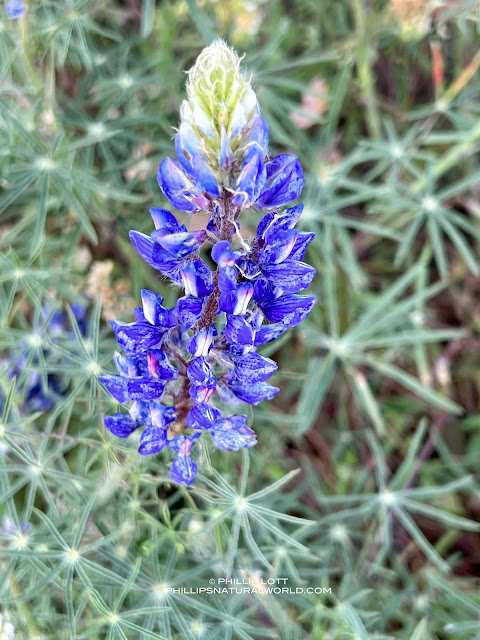This lupine is often cultivated for its high ornamental value, I mean you cannot miss the blue flowers, but they are also a very beneficial food source for birds.
Coulter's lupine's flowers are nectar-rich and tubular, making them attractive to hummingbirds as well as other pollinators. Insects and caterpillars also rely on the plants for food, so they attract birds such as warblers, wrens, bluebirds, kinglets, catbirds, tanagers, and gnatcatchers.
They also provide cover for ground-nesting birds, while the seeds are eaten by sparrow, buntins, juncos, and finches.
After the flowers of Coulter's lupine fade away, seed capsules appear that eventually open with a little explosive "pop." The pop throws the seeds a meter or more (3 feet) from the mother plant.
After the flowers of Coulter's lupine fade away, seed capsules appear that eventually open with a little explosive "pop." The pop throws the seeds a meter or more (3 feet) from the mother plant.
I name all the flowers I am sure they weren't;
Not fireweed loving where woods have burnt—
Not bluebells gracing a tunnel mouth—
Not lupine living on sand and drought.









No comments:
Post a Comment